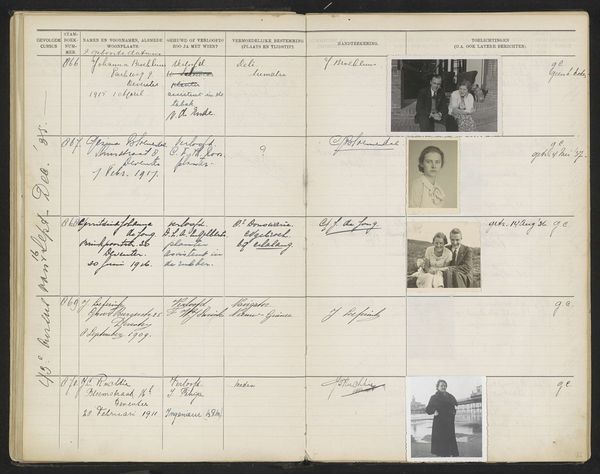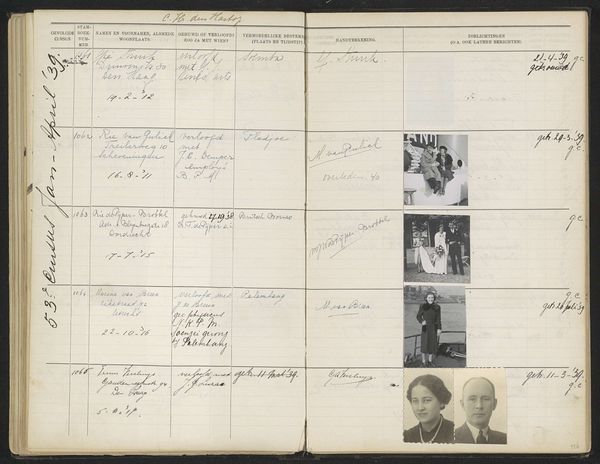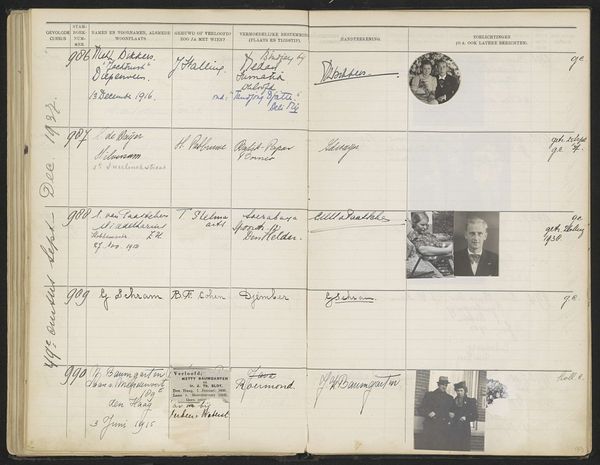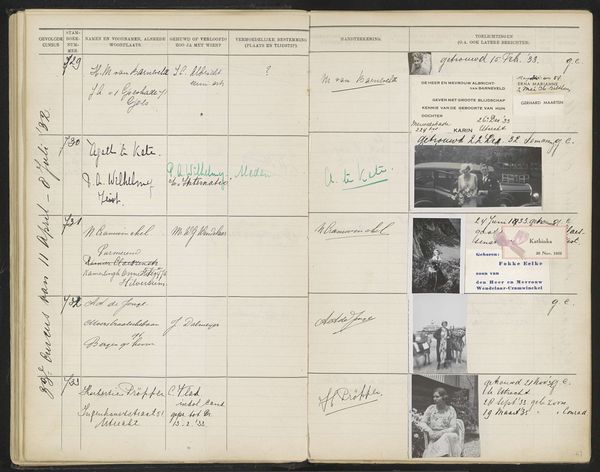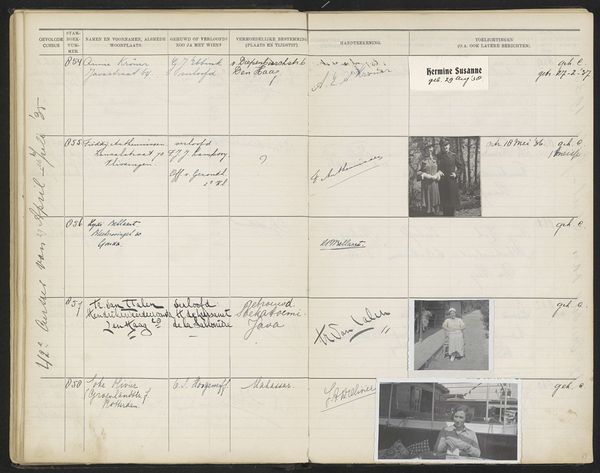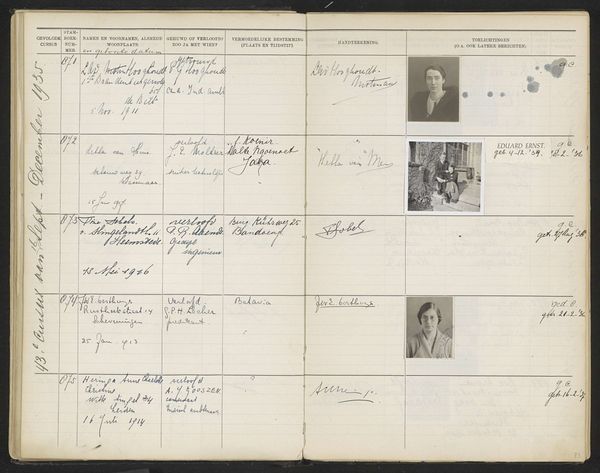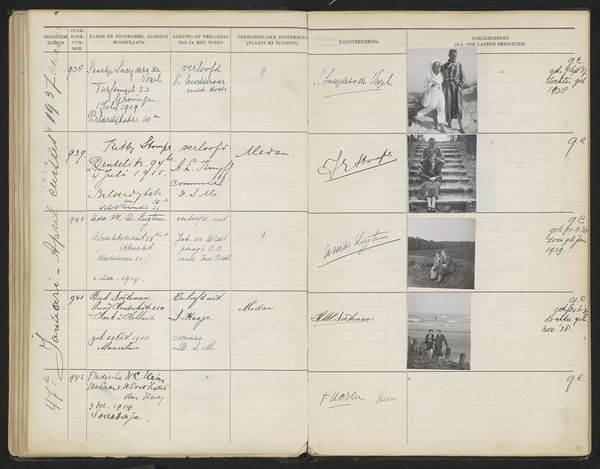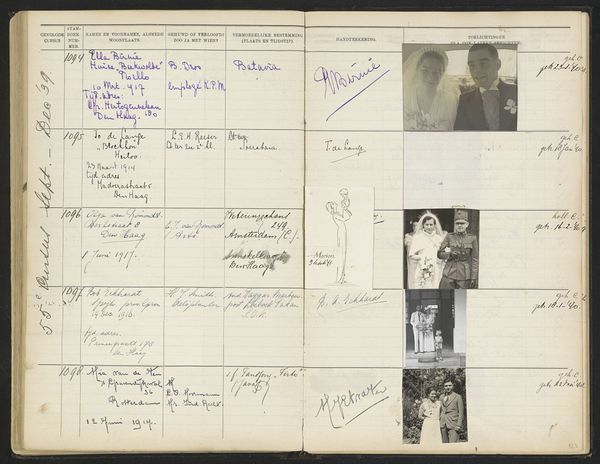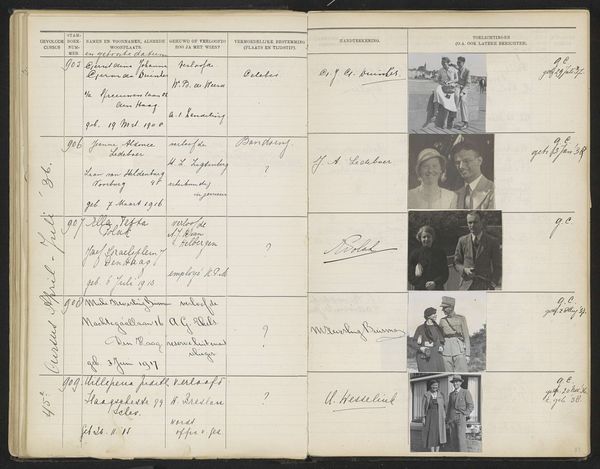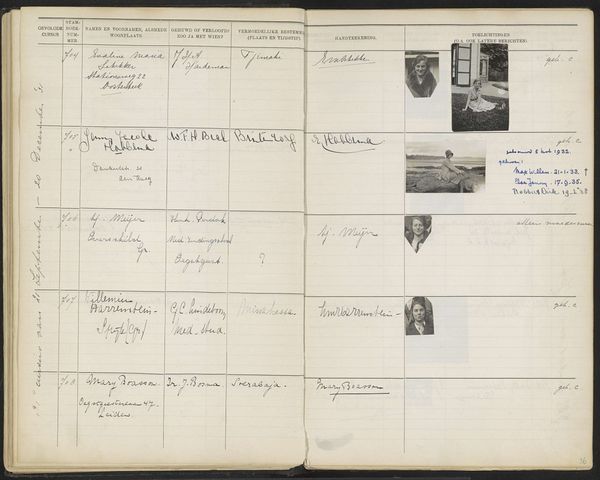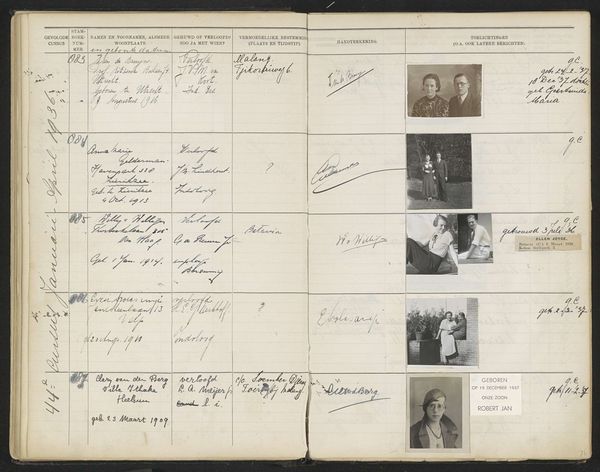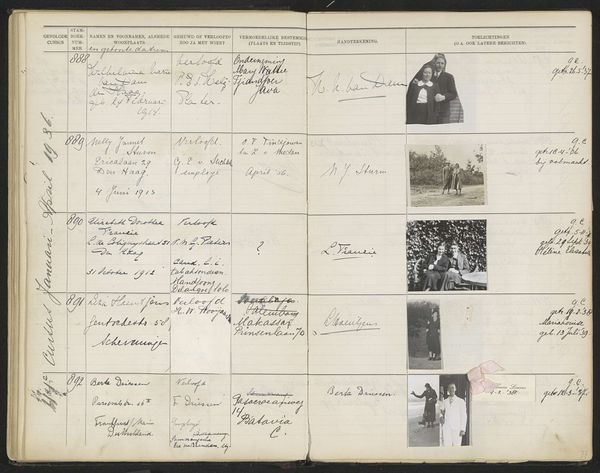
Blad 66 uit Stamboek van de leerlingen der Koloniale School voor Meisjes en Vrouwen te 's-Gravenhage deel II (1930-1949) Possibly 1935
0:00
0:00
drawing, paper, photography
#
portrait
#
drawing
#
aged paper
#
hand written
#
sketch book
#
hand drawn type
#
landscape
#
paper
#
photography
#
personal sketchbook
#
hand-written
#
hand-drawn typeface
#
pen work
#
sketchbook drawing
#
sketchbook art
#
modernism
Dimensions: height 337 mm, width 435 mm
Copyright: Rijks Museum: Open Domain
Editor: This is “Blad 66 uit Stamboek van de leerlingen der Koloniale School voor Meisjes en Vrouwen te 's-Gravenhage deel II (1930-1949),” potentially from 1935, by an anonymous artist. It's like an opened ledger featuring handwritten notes and small photographs pasted within each row. What initially strikes me is the formal nature juxtaposed with personal snapshots. What do you make of it? Curator: Indeed. Consider the book's purpose: a register of students at a Colonial School. Now, notice the pairing of bureaucratic record-keeping with personal photographs. This juxtaposition speaks volumes about identity and belonging, particularly within a colonial context. Editor: I see what you mean. It's like the official record tries to contain the individual experiences. What kind of emotional or cultural message do you think these symbols communicate? Curator: These aren't just records; they’re curated self-representations against the backdrop of colonial power. The act of including a photograph becomes an assertion of individuality within a system designed to classify and, in some ways, homogenize. Each photo offers a silent narrative, a visual echo of lived experience fighting for recognition. Consider the landscapes shown - the places of origin these students carry within. Editor: So it's about finding individual agency within institutional constraints. It makes me wonder about the stories behind each entry. Curator: Precisely. The handwritten notes reveal some facts, but the photos open up an interpretive space. They symbolize resilience, memory, and the enduring human need to leave a personal mark, even within the most rigid structures. Editor: That gives me a lot to think about. The students created little personal monuments within an administrative document. I will never see another registry the same. Curator: And hopefully, a deeper appreciation for how individuals subtly challenge prevailing systems through carefully chosen symbols of identity.
Comments
No comments
Be the first to comment and join the conversation on the ultimate creative platform.
